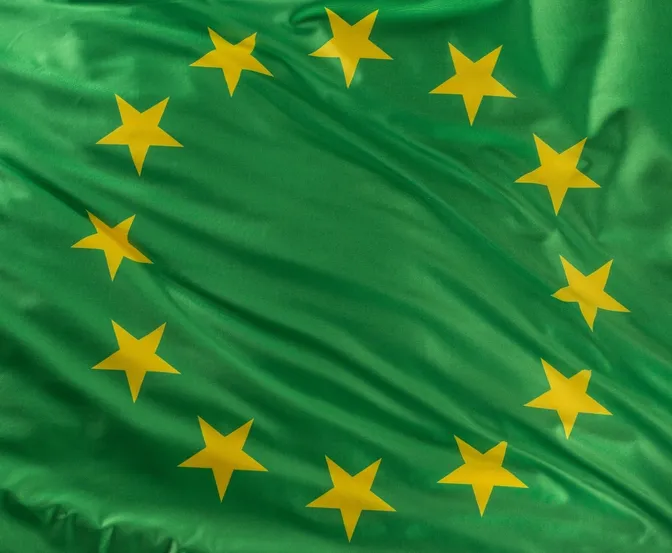A cultural shift is essential to realize the European Green Deal. Will the European Bauhaus fulfill its promise?
Last October, the European Commission’s president, Ursula von der Leyen, wrote a guest commentary about the European Bauhaus (EBH) Project, which was published by multiple newspapers including the Wiener Zeitung. She seems determined to turn lip service into concrete action. The international community of scientists, policy advisors, UN bodies, and world leaders have increasingly recognized that science, technology, and new business models are a winning team when solving problems such as the hole in the ozone layer. But by themselves, they will not bring about the sustainability transformation. To succeed, we also need a cultural shift. Over five years have passed since the 15-year plan for the world to transform toward sustainability (SDG agenda) and the Paris Climate Agreement were passed by the United Nations. Yet, implementation lags. Concrete measures to support a cultural shift do not exist yet. Von der Leyen is the first politician to take the lead in trying to facilitate that shift: the EBH should become the European Green Deal’s cultural project. It should "build the bridge between science & technology and art & culture" and "bring the European Green Deal closer to people’s minds and homes."
Taking the lead on culture also fits within Europe’s tradition. A successful example of a culture-driven transition takes us back 100 years. In 1920, as the world was recovering from the Spanish flu pandemic, architects, artists, students, engineers, and designers came together through the Bauhaus project to give shape to modernity. If the European Bauhaus Project is to succeed internationally like its early 20th-century German predecessor did, it needs to reflect today’s infinitely more complex world. It requires architects and engineers, but also systems scientists, AI specialists, and performing and visual artists to help create the cultural and behavioral shifts needed for the European Green Deal to succeed.
It remains to be seen whether the EBH will succeed. As of yet, it seems the EBH will employ architects and engineers to renovate houses and design sustainable cities, given that "buildings and infrastructures are responsible for at least 40% of all greenhouse gas emissions." However, a cultural project for the European Green Deal would need to be built on two pillars. In addition to architects and engineers, it would require artists and scientists to work together to help overcome the knowledge-to-action gap. The consequences of climate change pose significant challenges in terms of intergenerational justice, developmental justice, health, prosperity, peace, and migration. We need artists to grapple with the big ethical questions related to these issues. How can we build this second pillar and bring about the cultural shift?
At the International Institute of Applied Systems Analysis (IIASA), I have researched for five years how performing artists and scientists can work together effectively on complex challenges such as climate change, biodiversity loss, migration, and resource justice to enable public understanding that inspires action. The process of creating these works has yielded a framework and methodology that take scientific insights as a starting point, grapple with the resulting ethical dilemmas, question deeply held believes and turn them into interactive performances that use dance, theater, and music. Audience members are asked to make decisions and find out how they create impact. This experience enables better informed decision-making. At its core, this approach also strengthens democracy as we need citizens‘ engagement in the form of individual behavior change and collective action demanding science based policies.
If the EBH is built on this second pillar, the pillar of cultural shift through the collaboration of science and art, the EU will also live up to the European Council’s 2019 Resolution on the Cultural Dimension of Sustainable Development, which aims to enhance the contribution of culture to sustainable development. To date, artists willing to engage with the challenge of sustainability and contribute to SDG implementation, do not have access to funding. The EU will allocate 2,4 billion Euros, which is less than 0.19 percent of the multi-annual budget (2021-2027), to culture through its flagship cultural program, Creative Europe. The funding guidelines "encourage the audiovisual, cultural, and creative players to operate across Europe, to reach new audiences and to develop the skills needed in the digital age." The program is not structurally set up for artists to engage with today’s pressing issues, let alone to support a cultural shift to facilitate the European Green Deal’s implementation. Like all EU member states, Austria has agreed to increase the contribution of culture to sustainable development. No organizational structures have been created so far to support this work.
"The scientists have given us 15 years to literally create a new civilization, an ecological civilization. So where are the artists?" theater director Peter Sellars asked in his keynote at the opening of the Salzburg Festival in 2019. After many years, defined by lip service on the importance of art and culture, there is now a concrete possibility for implementation - at least at the European level. The artists are ready. The know-how is there. May the EBH now fulfill its potential.
